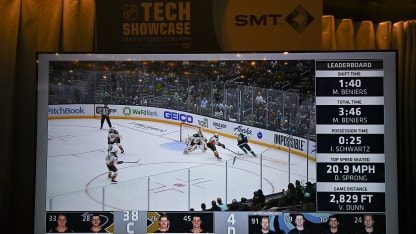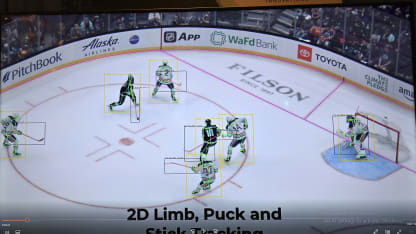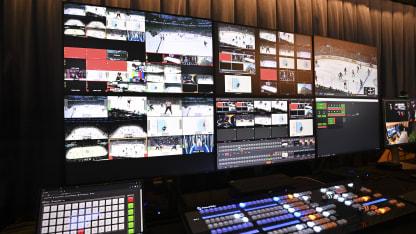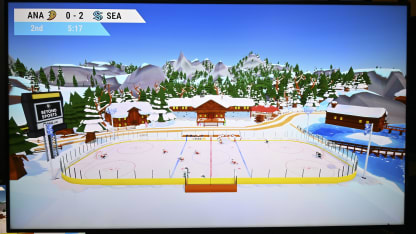It was not the broadcast going out to viewers of the Kraken-Ducks at home, but it was a mock-up of what could be, sooner than later. The pilot broadcast, part of the 2023 NHL Technology Showcase, was AWS demonstrating how it might create a more efficient, potentially more sustainable broadcast, without the need for production trucks, and with the ability to pull from in-arena feeds, from real-time feeds from other live NHL games for clips and updates, all without the need for production staff to be on-site.
It's flexibility and versatility, with all the options at their fingertips.
"We're trying to be forward thinking in everything we do," said Dave Lehanski, NHL executive vice president of business development and innovation, "… and this solution allows for the production of a complete live game broadcast with the efficiency and scalability to use the same set of tools to create multiple broadcasts of the same game to engage a variety of specific audiences."
It's the future of hockey consumption, a companion to old-fashioned game viewing, that the companies and the NHL believe will increase the experience for fans, for broadcasters, bringing in new eyeballs and engaging people the League might not have otherwise reached. It was all on display at the 2023 NHL Technology Showcase, the third of its kind, this one held at Climate Pledge Arena while the Kraken played the Ducks below.
To that end, at one station, Sander Schouten, the co-founder of Beyond Sports, was showing off the technology that may allow for more broadcasts like the March 14 "NHL Big City Greens Classic" in which Disney aired the first live, animated NHL telecast inspired by Disney's hit show "Big City Greens."
Using the data points from 10 cameras around the arena -- there are no chips or trackers -- they create a 3D image from 2D images via machine learning. They collect data on 29 points on the players and five on the stick, creating a million data points per minute.





















